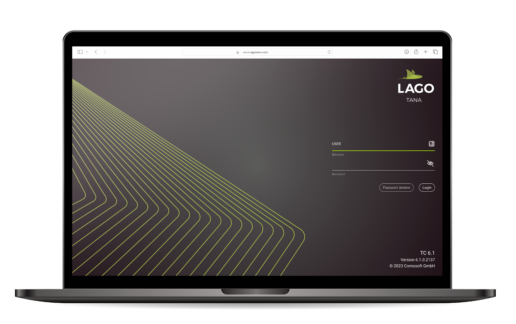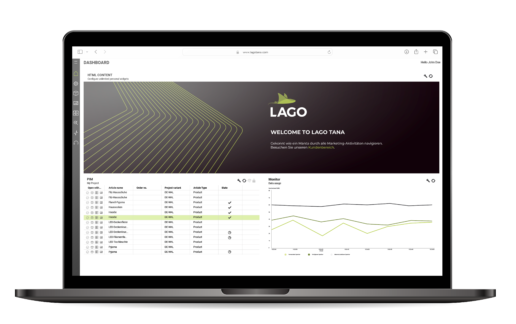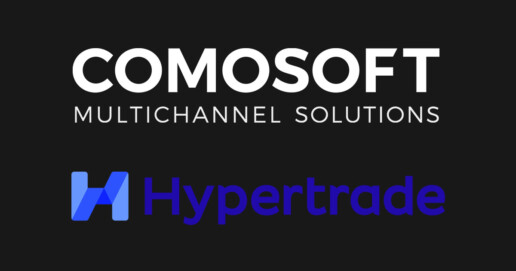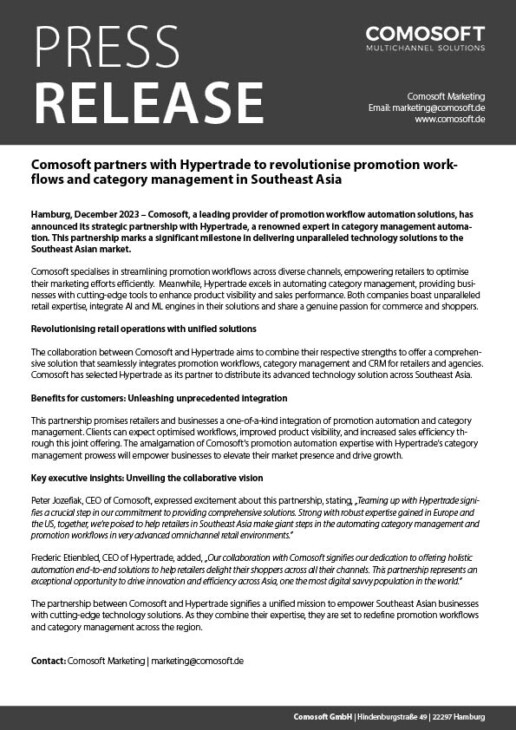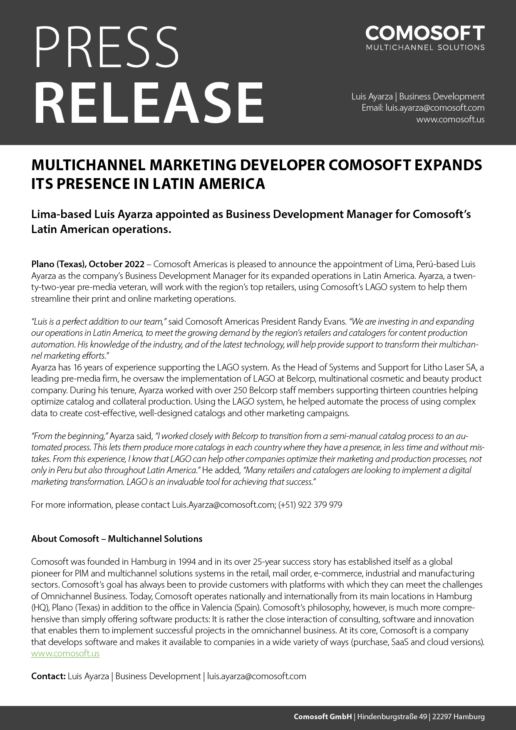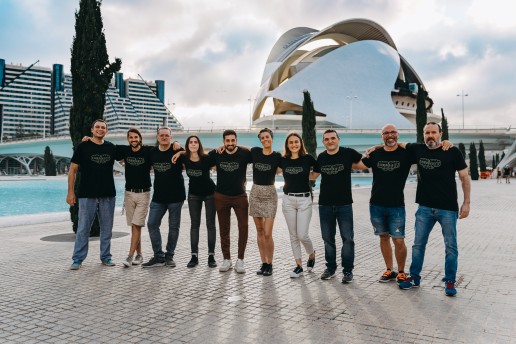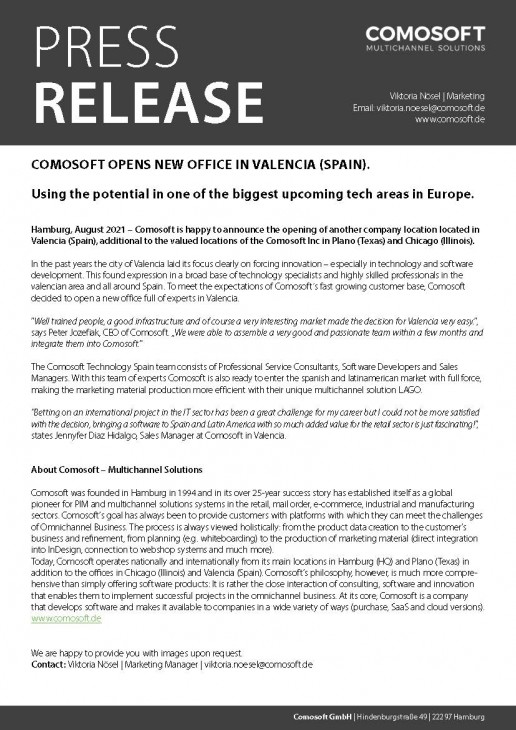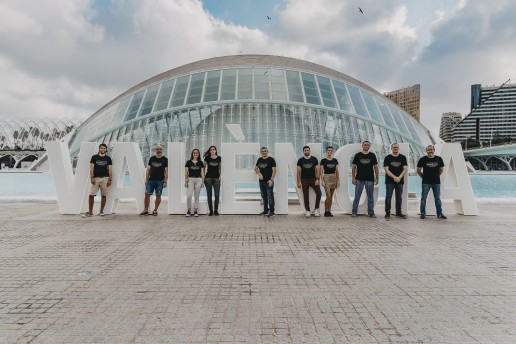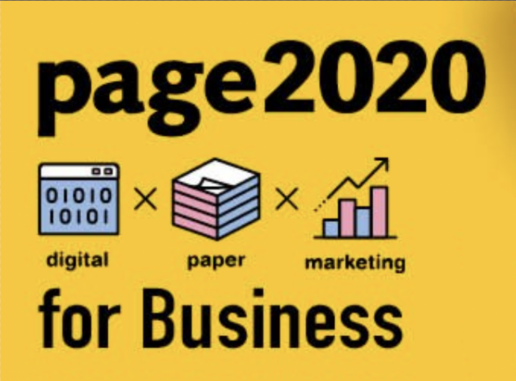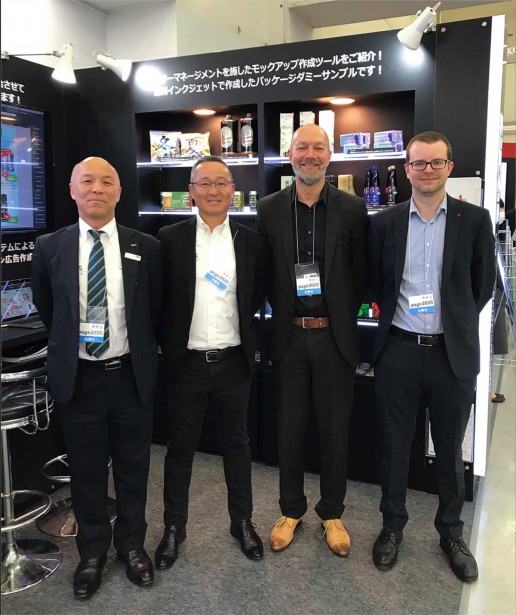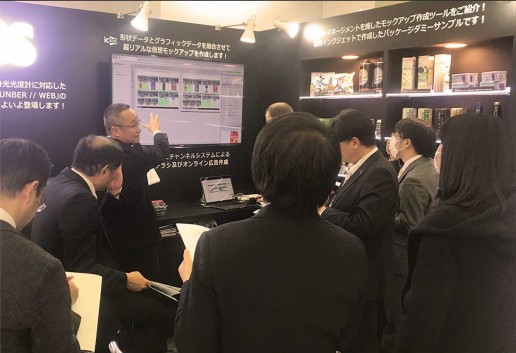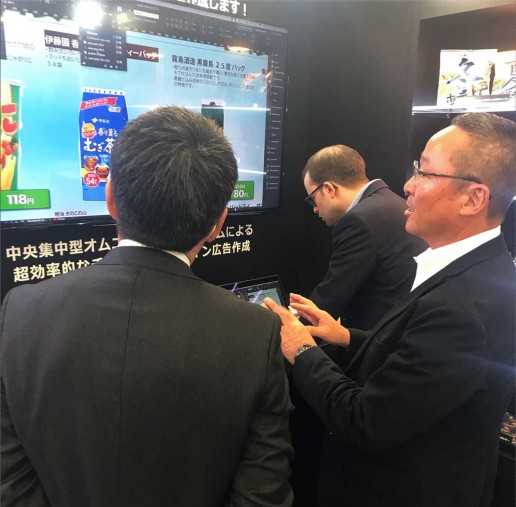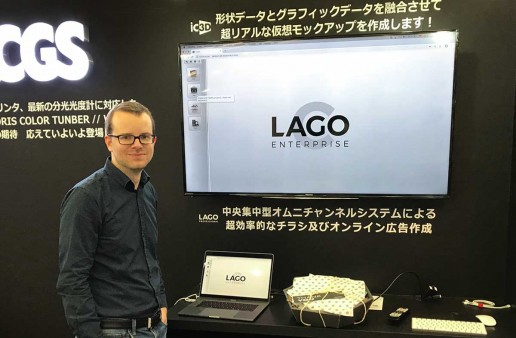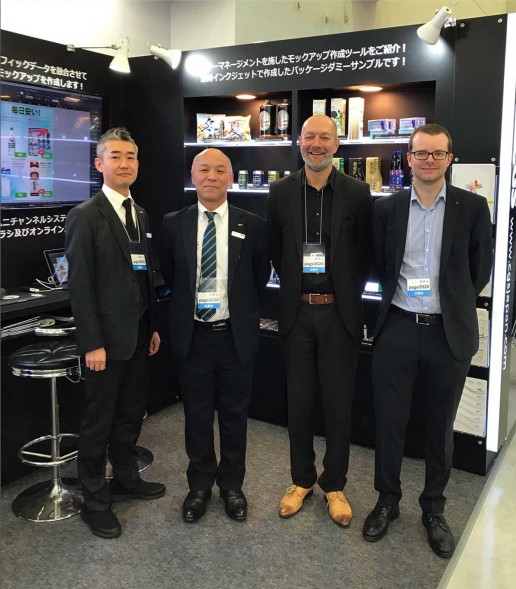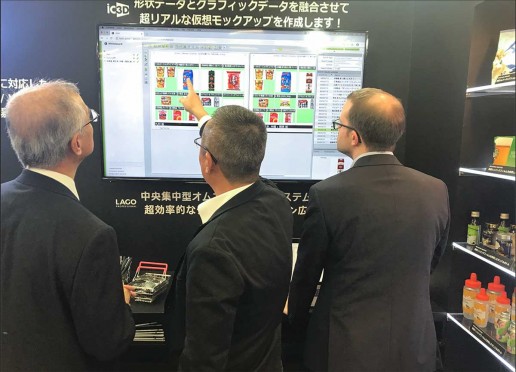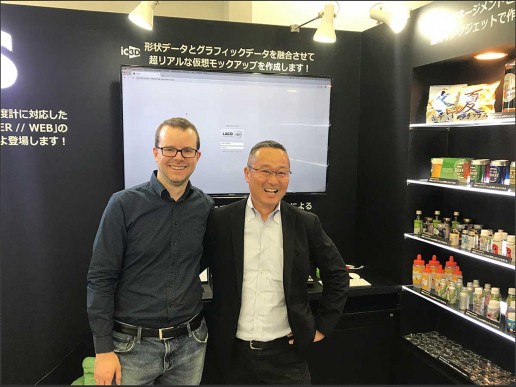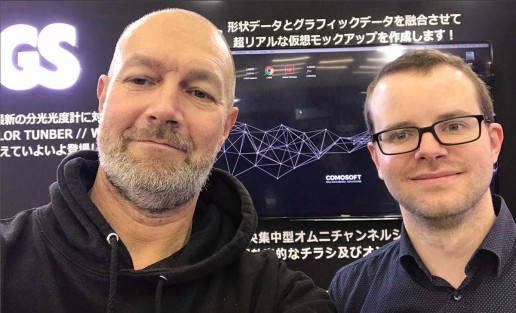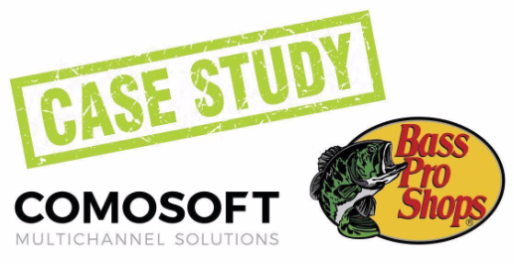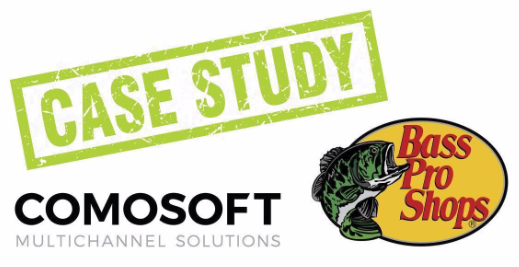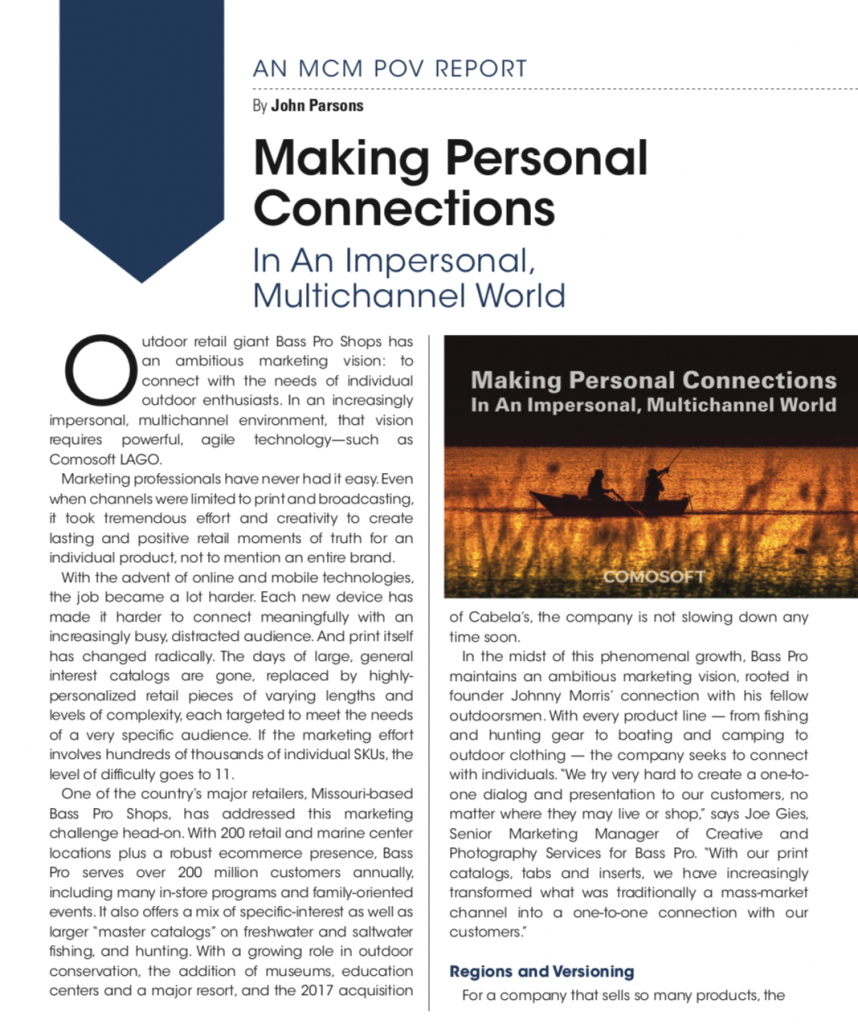LAGO TANA Release
LAGO TANA – Explore a whole new version of LAGO!
Improved interface, streamlined features and proven workflows:
With this release Comosoft enters a new era of LAGO versions – Beginning with the name Tana and a new LAGO logo. If you ever happened to have an encounter with a manta ray, our new logo mascot, you met one of the most calm and majestic animals on the planet. The version name Tana refers to the biggest lake in Ethiopia, which is the water mouth of the Blue Nile, and the surrounding prolific reserve.
HIGHLIGHTS
A completely new look and feel of LAGO is a long awaited change and above all reflects the new modern technology behind LAGO TANA. Despite the new UI, LAGO retains the familiar user experience. The most impact will be brought by the flat design and a general brighter appearance of the interface. Calm sections with reduced design elements will help users focus on their tasks.
Better overview, faster access. The new LAGO Dashboard, included in our web client will greet all users upon login and before navigating into one of our various applications.
LAGO Dashboard allows to configure global and personal dashboards. Global dashboards can be shared with user groups to ensure that users of the same group have access to the same information. Optionally users can create their own dashboards. Editing the layout of a dashboard is easily done by simple drag and drop actions.
For the content of the dashboards, various widgets are available, such as a global job list, which allows to directly jump into different application depending on the job (e.g. opening a document directly in LAGO Whiteboard or LAGO Proof). The widget “Search Results”, which is based on search folders contains quick links into the applications (e.g. to directly edit an article shown in a filter). LAGO Dashboard can also be used to distribute information such as announcements or links to other important resources, using the widget “HTML Content”.
For over 20 years, LAGO has been using Adobe Photoshop® to process assets for various use cases, from which the import of assets is the main use case. With more parts of the application moving towards the server and aways from client applications, the usage of Adobe Photoshop® has become challenging for IT departments.
The solution is the LAGO Asset Processor, which is the server-based solution for LAGO Pict with Adobe Photoshop®. LAGO Asset Processor runs on the LAGO Application Server (“LAS”) as a servlet within Apache Tomcat and performs asset processing for import and export purposes without the need of Adobe Photoshop®. It is designed for scalability and allows the setup of multiple instances in multiple Apache Tomcats if needed. It is also possible to assign different tasks to different LAGO Asset Processor instances.
Configuration and management of LAGO Asset Processor is being done within LAGO Admin, where instances, tasks and task configurations (e.g. “Hotfolder” configurations) can be configured. The logging and activity can be viewed within LAGO Monitor. The tasks can be activated and deactivated on the fly without having to restart the LAS.
The LAGO Asset Server within LAGO Pict, including the plugin for Adobe Photoshop® is still available with LAGO TANA. However, asset processing without Adobe Photoshop® is only possible when using the LAGO Asset Processor.
The module “LAGO History” including the corresponding application LAGO History has historically been an application for administrators, which allows to view a history on specific data changes per data entity. For example, showing which user has updated a certain price or article. Due to the potentially massive amount of data changes, end users were not the target audience for LAGO History.
This changes with LAGO TANA, since now we offer customisable reports for which administrators can define which data fields are visible in the report and for the first time allow to combine data from various different entities. This makes it possible to not only show a price change for a certain article, but also to which element that article might be assigned as well as the page on which the price change has happened. Previously this information had to be gathered from several views. In addition, an extended search and filtering is now possible for the data to be shown in the report as well as being able to compress variants. The result are condensed reports that can be viewed by end users.
The customised reports are configured within LAGO Admin and LAGO History. Users can access them directly from the project list of LAGO Whiteboard and even within LAGO Whiteboard itself. When selecting a custom report for a page, only changes for articles and elements assigned to page are shown. When selecting a raster field, only changes for that element and its articles are shown.
The usage of the custom reports in LAGO History requires the module “LAGO History”.
The LAGO article type structure is the backbone of every LAGO installation, especially when using LAGO as the centralised product information management system. As the business of our customers grows and evolves, so does the article type structure. New product ranges are added, others are removed or changed. This can have an impact on the article properties as well and might lead to the situation where article property types need to be consolidated and/or deleted.
The article property types however are used in various places in LAGO, such as document templates, scripts and tables. A deletion of a property type could therefore cause a data loss in the system.
With LAGO TANA the new module “LAGO Property Remapping” allows a remapping of article property types which will remap all references of an article property type to a new one.
Support of Adobe InDesign and Photoshop 2024
LAGO TANA will add the support of Adobe InDesign and Adobe Photoshop 2024.
LAGO Layout: Easy access to placeholder settings and highlights
Changing placeholder settings (e.g. dummy values) within document templates can now be done directly in the placeholder palette instead of having to go the template settings dialog. Moreover, the highlight of placeholders can now be enabled/disabled with a single click with the palette “Annotations”.
LAGO Layout: On-demand update for all placeholders of current document
A new button within the placeholder palette allows to update all placeholders of the document without having to close and reopen the document.
LAGO Layout: Move elements between documents
It is now possible to move elements to other documents within the same project. The elements will be moved including all its details, such as components and assigned articles directly within LAGO Layout and without having to rely on LAGO Whiteboard or LAGO PIM/Explorer.
LAGO Layout: Generate PDF documents for a variants of different projects
For customers that are spreading the page production for one printed publication among different projects it is now possible to generate a PDF per project variant type across multiple projects.
LAGO Layout: Open document template of document
A shortcut is now available within the document palette that allows to open the assigned document template of a selected document.
LAGO DAM: Administrative Tasks
The administrative tasks known from LAGO Pict are now all available within LAGO DAM. This includes functions like completely deleting an asset, cleaning up the database from all logically deleted assets or the re-creation of an FPO/Preview for selected assets.
LAGO DAM: Display of asset properties
Asset properties, which were previously only available in LAGO Layout and the LAGO API are now also visible within LAGO DAM.
LAGO Admin: Default Password Policy
LAGO TANA enforces a new default password policy. All passwords must have at least 10 characters. Two of the same characters in a row are not allowed and the password must be different from the user name. This also applies if no password policy is configured within LAGO and also to all technical users, including the users for database connection. The password policy can be strengthened to be even more restrictive.
This was just an appetizer...
Schedule a demo to discover the high potential of LAGO TANA!
Comosoft partners with Hypertrade
Comosoft partners with Hypertrade to revolutionise promotion workflows and category management in Southeast Asia
Hamburg, December 2023 – Comosoft, a leading provider of promotion workflow automation solutions, has announced its strategic partnership with Hypertrade, a renowned expert in category management automation. This partnership marks a significant milestone in delivering unparalleled technology solutions to the Southeast Asian market.
Comosoft specialises in streamlining promotion workflows across diverse channels, empowering retailers to optimise their marketing efforts efficiently.
Meanwhile, Hypertrade excels in automating category management, providing businesses with cutting-edge tools to enhance product visibility and sales performance.
Both companies boast unparalleled retail expertise, integrate AI and ML engines in their solutions and share a genuine passion for commerce and shoppers.
Revolutionising retail operations with unified solutions
The collaboration between Comosoft and Hypertrade aims to combine their respective strengths to offer a comprehensive solution that seamlessly integrates promotion workflows, category management and CRM for retailers and agencies. Comosoft has selected Hypertrade as its partner to distribute its advanced technology solution across Southeast Asia.
Benefits for customers: Unleashing unprecedented integration
This partnership promises retailers and businesses a one-of-a-kind integration of promotion automation and category management. Clients can expect optimised workflows, improved product visibility, and increased sales efficiency through this joint offering. The amalgamation of Comosoft’s promotion automation expertise with Hypertrade’s category management prowess will empower businesses to elevate their market presence and drive growth.
Key executive insights: Unveiling the collaborative vision
Peter Jozefiak, CEO of Comosoft, expressed excitement about this partnership, stating, “Teaming up with Hypertrade signifies a crucial step in our commitment to providing comprehensive solutions. Strong with robust expertise gained in Europe and the US, together, we’re poised to help retailers in Southeast Asia make giant steps in the automating category management and promotion workflows in very advanced omnichannel retail environments.”
Frederic Etienbled, CEO of Hypertrade, added, “Our collaboration with Comosoft signifies our dedication to offering holistic automation end-to-end solutions to help retailers delight their shoppers across all their channels. This partnership represents an exceptional opportunity to drive innovation and efficiency across Asia, one the most digital savvy population in the world.”
The partnership between Comosoft and Hypertrade signifies a unified mission to empower Southeast Asian businesses with cutting-edge technology solutions. As they combine their expertise, they are set to redefine promotion workflows and category management across the region.
For further information, please contact: marketing@comosoft.de
Belcorp: The Beautiful Message
Belcorp: The Beautiful Message
How a multinational beauty company manages its vast array of product information to create (and future-proof) its vital marketing efforts.
The modern beauty industry is complex indeed. Companies in this highly competitive arena succeed only when they connect their many products to the needs and desires of ordinary people. These are consumers looking for a brand they can trust and rely upon when it comes to their own self-image. Every product is a personal connection, not just a commodity. One such company – Belcorp – has successfully made this connection with its customers for years. But in today’s multichannel environment, that also poses an ongoing marketing challenge.
When a beauty company offers multiple products, sells to customers in many countries, and supports a large, knowledgeable, in-person sales organization, it must have a strong, agile marketing presence. It must maintain a complex array of printed catalogs and other targeted marketing materials and plan for the same level of complexity in its digital media. This is a closer look at how Belcorp is meeting the challenge today – and planning for success in the future.
A history of personal connection
Belcorp was founded over fifty years ago, dedicated to the ideal of promoting beauty as a way to achieve personal fulfillment. It uses a direct, in-person sales model – a vast network of consultants throughout the Americas – to connect with individual customers. This go-to-market strategy has created a positive experience for many, helping thousands of women achieve economic independence. Belcorp CEO Erika Herrero notes, “day by day, we are transforming the lives of thousands of women and their families.” But the company’s purpose transcends the economic results. “We promote beauty to achieve personal fulfillment,” says Belcorp spokeswoman Joy Chion Li.
“We inspire each person to give their best so that they and those around them achieve the extraordinary.”
This lofty goal has guided the company to remarkable success. Since its founding in 1968, Belcorp has grown its in-person sales network to over 850 thousand consultants in 13 countries in the Americas. In addition, the company operates 54 physical retail locations, and in 2016 it launched a robust e-commerce presence.
Today, Belcorp has three distinct but interrelated product lines. The Ésika line features an array of high-quality makeup, perfumes, personal care products, and jewelry – all designed to “inspire women to own their confidence and celebrate their power.” The L’BEL brand combines beauty, health, and technology in the form of personal hygiene and skincare products for both women and men. The third line, Cyzone, offers high-quality, affordable beauty products designed for younger women.
In addition to its product lines’ impressive breadth and scope, Belcorp’s products reflect its commitment to sustainable development and manufacturing, including certification of its cruelty-free testing requirements. This is all carefully managed, along with the data related to each individual product.
Download the full case study here!
Fill out the contact form and receive an e-mail with the link to download the case study. If you don’t receive an e-mail from us, please check your spam folder.
Press Release: Comosoft expands its presence in Latin America
Multichannel Marketing Developer Comosoft Expands Its Presence In Latin America
Lima-based Luis Ayarza appointed as Business Development Manager for Comosoft’s Latin American operations.
Plano (Texas), October 2022 – Comosoft Americas is pleased to announce the appointment of Lima, Perú-based Luis Ayarza as the company’s Business Development Manager for its expanded operations in Latin America. Ayarza, a twenty-two-year pre-media veteran, will work with the region’s top retailers, using Comosoft’s LAGO system to help them streamline their print and online marketing operations.
“Luis is a perfect addition to our team,” said Comosoft Americas President Randy Evans. “We are investing in and expanding our operations in Latin America, to meet the growing demand by the region’s retailers and catalogers for content production automation. His knowledge of the industry, and of the latest technology, will help provide support to transform their multichannel marketing efforts.”
Ayarza has 16 years of experience supporting the LAGO system. As the Head of Systems and Support for Litho Laser SA, a leading pre-media firm, he oversaw the implementation of LAGO at Belcorp, multinational cosmetic and beauty product company. During his tenure, Ayarza worked with over 250 Belcorp staff members supporting thirteen countries helping optimize catalog and collateral production. Using the LAGO system, he helped automate the process of using complex data to create cost-effective, well-designed catalogs and other marketing campaigns.
“From the beginning,” Ayarza said, “I worked closely with Belcorp to transition from a semi-manual catalog process to an automated process. This lets them produce more catalogs in each country where they have a presence, in less time and without mistakes. From this experience, I know that LAGO can help other companies optimize their marketing and production processes, not only in Peru but also throughout Latin America.” He added, “Many retailers and catalogers are looking to implement a digital marketing transformation. LAGO is an invaluable tool for achieving that success.”
The Designer’s Dilemma
Designers have more to do than hunt for images and product information. But when their printed and online designs involve complex data, they need tools to stay productive.
Graphic designers have powerful, unprecedented digital asset management solutions at their disposal. Tasks that once took days or weeks now take only minutes. Instead of waiting for specialists to deliver retouched images and typeset copy, a designer can do it all within sophisticated design software.
It’s a mixed blessing – especially in high-volume, product-intensive design projects. Think about catalogs or retail flyers with versions customized for multi-location retailers. Just because you can create infinite versions of a complicated piece doesn’t mean you have the resources to do so. The more complex a project is, and the more product and price variations each version requires, the more likely it is something will be missed creating more versioning reviews for marketing departments.
The High Cost of Data Handling
For B2B and B2C graphic designers, print and digital promotions very often involve products. Each piece features not only high-quality picture(s) but also descriptions, reviews, sizes, colors, pricing, and/or promotion details.
Now, multiply that by the number of products per page, the number of pages, the frequency of each promotion, and the number of local variations. With so much information to juggle, there’s a real risk of turning talented designers into data-entry operators. Hiring more designers is seldom cost-effective, especially if they don’t have enough time to design! It’s an endless cycle.
Just developing and finding images also consumes a percentage of a designer’s time. One study found that designers can spend 20 to 30 percent of their day looking for the right images – or the right versions – to use in a layout.
Cost of labor is only one factor. Data selection errors – the wrong image or price for one of many versions of a catalog, for example – can result in reprints, refunds, and even legal liability. Not only do designers have less time to design, they are increasingly prone to costly mistakes.
Real Automation to the Rescue
In the early days of desktop design, product and marketing information was available from many sources—often random and disorganized. The rise of Digital Asset Management (DAM) and Product Information Management (PIM) systems began to slowly change that. Designers still had to frequently search online databases and hope that they have the most up-to-date data.
Additionally, product information is very often a collection of related data from multiple sources. Making sure that every detail was correct—and current—was time-consuming, prone to errors, and left production racing to meet go-to-market deadlines.
Fortunately, real process automation between multiple data sources and the designers toolkit is now possible, also outlined in our Modern Day Hunting and Gathering blog covering the power of the LAGO plugin for Adobe InDesign. Using a collaborative workflow, marketing managers can pre-populate an InDesign template with all the required PIM and DAM data, leaving the designer free to design and produce multiple versions of a piece.
Creativity Within Constraints
A templated design workflow may seem like a contradiction in terms, but it’s not. With fewer hours chasing and entering data—and hoping it is accurate data—designers can focus on making the piece attractive and compelling. There are also important design decisions that cannot be automated. In fact, they are made easier because of automation. In the LAGO example, a template may contain a “block” of related data for a particular product, including more than one image for that product. In that case, the selection of just the right image, including color, orientation, and composition, requires a designer’s eye. Since the designer is not overburdened with chasing data details, they are freed up to focus on decisions affecting quality and messaging.
While automation can make the designer’s life easier and more productive, it can never replace their innate and valuable talent.
It’s All About Communication
Since the first cave paintings, designers have sought ways to communicate important ideas visually. Technology has enabled them to do so to a mass audience and, more recently, in a way that relates to each individual. Today, complex data are more relevant than ever. But whether the final medium is in print or on screen, the message always requires the skills of a visual communicator.
Using advanced systems like LAGO’s production capabilities to wrangle the data simply lets the designer focus on the skills that make their communication effective.
Press Release: Comosoft opens new office in Valencia
Comosoft opens new office in Valencia (Spain)
Using the potential in one of the biggest upcoming tech areas in Europe.
Hamburg, August 2021 – Comosoft is happy to announce the opening of another company location located in Valencia (Spain), additional to the valued locations of the Comosoft Inc in Plano (Texas) and Chicago (Illinois).
In the past years the city of Valencia laid its focus clearly on forcing innovation – especially in technology and software development. This found expression in a broad base of technology specialists and highly skilled professionals in the valencian area and all around Spain. To meet the expectations of Comosoft´s fast growing customer base, Comosoft decided to open a new office full of experts in Valencia.
“Well trained people, a good infrastructure and of course a very interesting market made the decision for Valencia very easy.“, says Peter Jozefiak, CEO of Comosoft. „We were able to assemble a very good and passionate team within a few months and integrate them into Comosoft.“
The Comosoft Technology Spain team consists of Professional Service Consultants, Software Developers and Sales Managers. With this team of experts Comosoft is also ready to enter the spanish and latinamerican market with full force, making the marketing material production more efficient with their unique multichannel solution LAGO.
“Betting on an international project in the IT sector has been a great challenge for my career but I could not be more satisfied with the decision, bringing a software to Spain and Latin America with so much added value for the retail sector is just fascinating!“, states Jennyfer Diaz Hidalgo, Sales Manager at Comosoft in Valencia.
From Insert to Internet
A successful recipe for marketing in food retailing adapted to current customer needs.
Grocery retail chains are facing unprecedented economic pressure throughout the developed world. Demographic shifts and demands for convenience, low prices, and customised service are mandating a whole new approach to multichannel messaging.
Marketing departments have begun to do this. The leaders have responded and evolved by using data more effectively. The process begins with highly relevant, ongoing campaigns – supported by all the devices and venues that individual shoppers prefer. Such a path to success can only be created when the retailer is in control of both the data and all its channel-specific applications.
Heeding the Warning Signs
Early last year, global consultancy McKinsey & Company published an ambitious call to action for the beleaguered grocery industry. Challenges to profitability include shifting demographics, new buying habits and technologies, and relentless pressure from competitors like Walmart. Grocery retailers, the authors proclaim, must embrace these disruptive trends. They must innovate in order to avoid a disastrous race to the bottom.
Innovation can take many forms. The study recommended that grocers build ongoing campaigns emphasizing one or more of the value propositions that define today’s shopping experience: convenience, inspiration, and value for money. Communicating and delivering on these imperatives – especially the first two – can happen via printed or online channels. But to do so efficiently, they all require mastery of one essential element: a mountain of product and customer data.
With Great Data Come Great Responsibilities
As we noted in our last article, grocery retailers have access to enormous volumes of data, from supplier-originated product data in a PIM to images and marketing data in a DAM. These data also include a myriad of pricing, inventory, and (depending on the number and location of branch locations) logistics information. If the retailer is proactive, they also include individual customer buying histories, thanks to loyalty discount programs.
Just having the data is of course not a great advantage. Knowing how to use it – in concert with marketing and store operations – is the key to success.
Start With the Basics
Untangling and optimizing all that data often begins with something all grocery retailers have but few utilize to its full potential: the lowly printed insert or circular. In the last article, we described how the Comosoft LAGO system is used, in connection with Adobe InDesign, to produce hundreds of regional variations from a single, “master” circular. As impressive as that is, it’s only the tip of the marketing iceberg.
In his October 2018 blog, content marketer David Kindervater noted that the “print is dead” trope is a fallacy. When it comes to marketing, print and digital are inseparable partners, not zero-sum rivals. Not only does print appeal to our sense of touch, it can also be highly customized, through the “magic” of data-driven, variable data printing. Today, grocery circulars can be customised to the individual store level, creating variants for almost any local situation. In the not-so-distant future, customisation of a mailed flyer can reflect an individual’s shopping preferences.
A major step in that direction is Comosoft’s Direct Individualized Marketing (DIM) module. Acting as a sophisticated traffic controller, LAGO DIM can take basic customer information (e.g., names and addresses) as well as preferences and purchase history, combine them with PIM and DAM information, and generate multiple, “one-to-one” campaigns for both print and digital media.
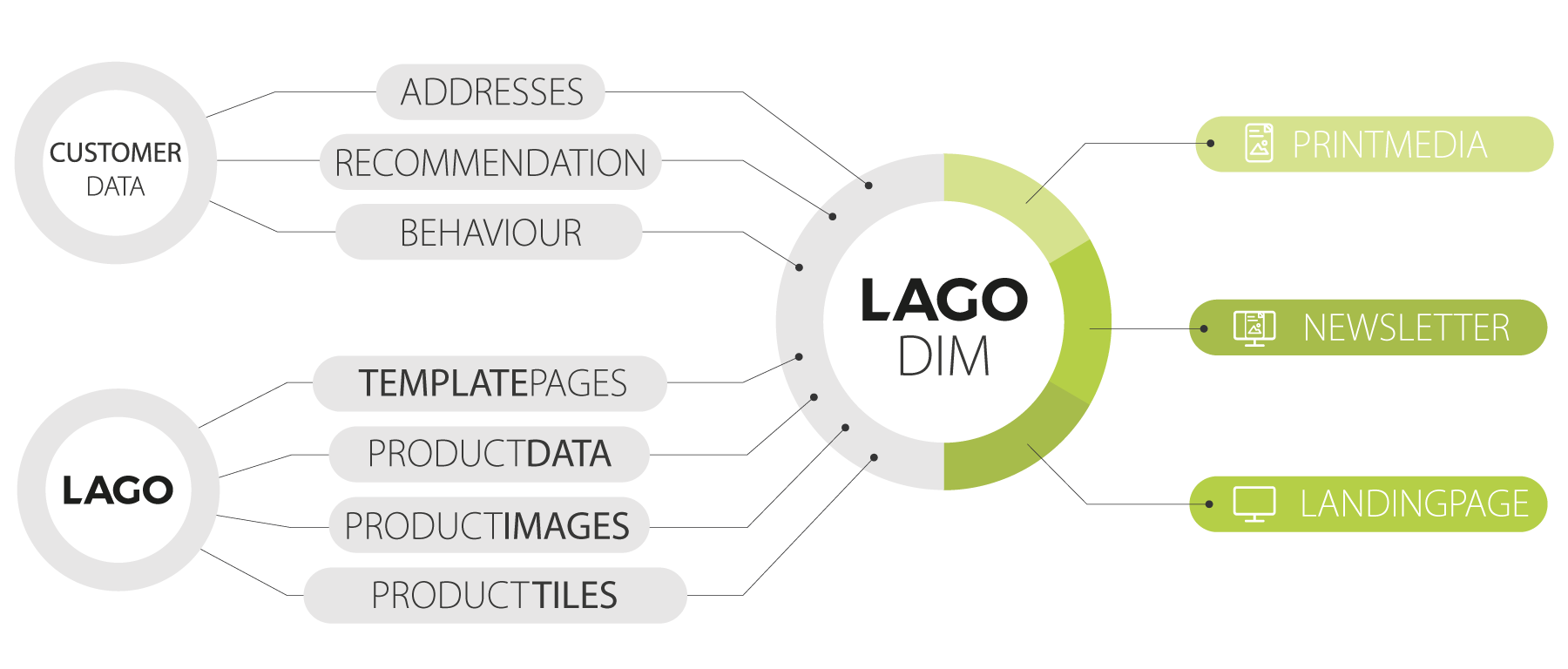
The Integration Challenge
No matter how well-designed a print or online campaign may be, the key to success will always be a retailer’s integration of complex data. Mobile shopping apps, in-store kiosks, and loyalty programs all rely on the same basic data as the lowly circular. If the basic data infrastructure is sound for print campaigns, it will give retailers a leg up when expanding their digital footprint.
Unfortunately, there is no out-of-the-box solution for creating a grocery retailer’s ideal data marketing system. There are simply too many variables. However, both vendors and major retailers are embracing the integration challenge. One prominent grocery chain recently re-vamped its data operation with the help of Comosoft specialists. “We integrated four robust systems into LAGO,” one senior IT executive remarked. “We were able to streamline marketing for produce and accelerate time to market across our regional and national brand’s print and digital platforms.” The chain was also able to streamline and reduce costs for both print and digital marketing campaigns. “Gone are the days of multiple deadline extensions,” he said.
Making the Connection
In the pre-digital, pre-industrial days, the local general store had just about anything a shopper might need. The owner also had a direct, personal relationship with individual customers, whose needs and preferences were known. Those days are gone, but the desire for an intimate, personal connection still remains. The grocery retailer who can make that connection, virtually and with the aid of well-integrated data, will succeed at making their brand a trusted destination.
Comosoft presents LAGO in Japan
Comosoft visited the PAGE 2020 to present our Multichannel Software LAGO.
Japan it was a pleasure!
From Wednesday 05/02/2020 until this Friday we attended the yearly PAGE 2020 that took place in the Sunshine City Convention Center in Tokyo, Japan. The exhibition was assembled around the topics Digital, Print and Marketing for B2B customers and took place for the 33rd time this year. Of course we presented our Software LAGO and as you can see our audience was very keen to learn more about it . We are looking back on three exciting days of networking and presenting LAGO at the PAGE 2020.
Our Head of Product Management Paul and our Managing Director Peter presented Live-Demos, to show the benefits of LAGO helping you in your Print Publishing process. We would like to thank the around 66,000 specialists, who attended the PAGE 2020 from following industries:
- Living | Paper & Paper Products
- Printing & Publishing
- Information
- Telecommunication
- Data Processing
- Computer
IKEA's most eco-friendly print supplier
IKEA's most eco-friendly print supplier:
The Eversfrank Group wins IKEA Tulip Award
Sweden, October 2019 – On the evening of 9 October, the Swedish furniture chain IKEA hosted its annual Tulip Awards. Year after year, IKEA awards the prize in the form of a wooden tulip for the best printing performance in the production of its current catalogue. The Eversfrank Group is one of the prizewinners and scored highly with its sustainable print production concepts. Now the Scandinavian colleagues of the Eversfrank Group have brought the prize to Germany, where it was happily received by Managing Director Axel Polei.
31 printing companies from 24 countries accepted the invitation to the small Swedish town of Älmhult, where the IKEA headquarters are located. The Eversfrank Group won the coveted prize in the “Sustainability” category for the “Best Sustainable Initiative” – after just two years of working with the Swedish furniture store giant. With its two largest production sites in Meldorf and Preetz, the printing company is now one of IKEA’s best printing suppliers. IKEA was particularly impressed by the print production according to the so-called “Healthy Printing” concept, with which the Eversfrank Group produces print products in an exceptionally sustainable way.
“In the spring and summer of this year, we produced a part of the IKEA annual catalogue”, says Ulf Malmberg, Manager Business Development of the Eversfrank Group, who closely supervises IKEA’s print production. “We have been continuously working on making our processes and production sequences even more environmentally friendly for years. Together with IKEA, we wanted to go one step further and implemented printing in accordance with the criteria of the Healthy Printing Principle.
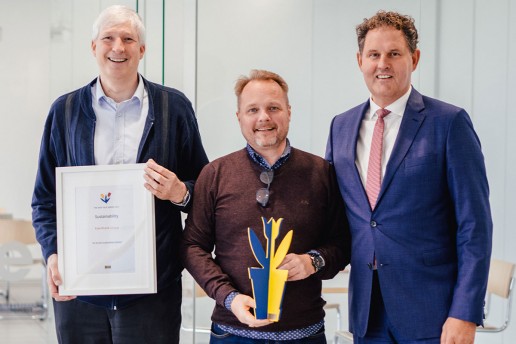
As a member company of the Healthy Printing Initiative, the Eversfrank Group is committed to working towards healthy print products in the long term by actively supporting positive impacts rather than just minimizing negative ones. “For example, we are working to ensure that all ingredients and materials in the printed paper cycle become a useful biological or technical resource for other processes,” explains Hauke Klinck, Environmental Manager of the Eversfrank Group. “Our long-term goal is to produce printed products that contain 100% defined biocompatible components that are safe to compost, can be used in other products, or can be incinerated without a contaminant filter. For IKEA, a catalogue production was made possible, among other things, by changing the sheet and roller colours to the Cradle to Cradle® standard with improved and sustainable properties.”
Axel Polei, Managing Director of the Eversfrank Group in Meldorf, emphasizes that the award is due to all employees who have worked energetically with IKEA and contributed to this success. “It is highly motivating to be honoured by such a renowned customer and it shows us that the environmentally conscious path we have been taking for years is the right one,” he concludes.
Case Study: Bass Pro Shops
Check out this in-depth case study to see how Bass Pro Shops is using Comosoft LAGO
to maximize the efficiency and effectiveness of their retail marketing operations.


